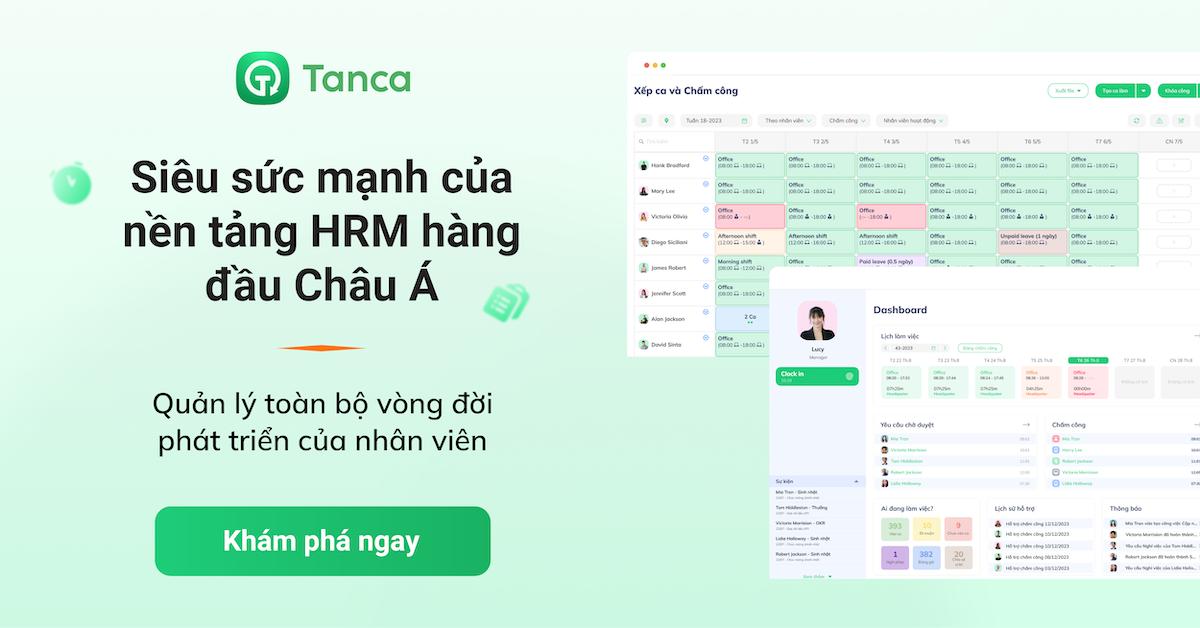Your employees are facing mental and emotional health challenges—this is not a criticism, but a reality that every organization must acknowledge. Whether dealing with chronic illnesses, the effects of addiction, or simply feeling overwhelmed by life’s demands, your team members need support to navigate these difficulties and continue contributing meaningfully to your organization. Implementing an Employee Assistance Program (EAP) is a proactive step that can provide essential resources for your employees’ mental health and well-being. As workplace stress continues to rise, with studies showing that nearly half of employees report significant stress levels, the need for effective support systems has never been more critical.
In this article, Tanca will explore the key aspects of EAPs, including their benefits, potential challenges, and how to successfully implement one in your organization.
Let’s dive in and discover how you can foster a healthier, more resilient workforce.
What are Employee Assistance Programs?

An Employee Assistance Program (EAP) is a voluntary, employer-sponsored benefit that provides free and confidential support to employees facing personal challenges that may impact their job performance.
EAPs typically offer a range of services, including assessments, short-term counseling, referrals to specialized resources, and follow-up support. These programs are designed to help employees manage issues such as mental health concerns, substance abuse, financial difficulties, and family-related problems.
Additionally, EAP counselors may collaborate with managers to address organizational challenges and enhance workplace well-being.
Types of services included in EAP coverage

Employee Assistance Programs (EAPs) offer a comprehensive range of services designed to support employees in managing personal and professional challenges. The following are the key types of services typically included in EAP coverage:
- Counseling Services: EAPs provide short-term, confidential counseling for various mental health issues, including stress, anxiety, depression, grief, and relationship challenges. This may also encompass specialized support for substance abuse and addiction.
- Financial Services: Employees can access financial counseling that includes budgeting advice, debt management, retirement planning, and assistance with tax-related questions. EAPs may also offer referrals to financial experts for more extensive services.
- Legal Services: EAPs often include legal consultations on matters such as family law, estate planning, and consumer rights. Employees can receive guidance on legal issues without incurring costs for initial consultations.
- Crisis Intervention: Immediate support is available for critical incidents affecting the workplace or employees, such as natural disasters or traumatic events. This service helps mitigate the impact on mental health and job performance.
- Family and Eldercare Support: Resources are provided for employees facing family-related issues, including marital problems, child care assistance, and support for elder care responsibilities.
- Work-Life Balance Consultation: EAPs assist employees in managing their work-life balance by offering strategies and resources to help them navigate personal responsibilities alongside their professional obligations.
- Training and Development: Many EAPs offer workshops and seminars on topics such as stress management, conflict resolution, communication skills, and leadership development to enhance employee skills and workplace dynamics.
- Referral Services: When short-term support is insufficient, EAPs can provide referrals to external specialists or resources, including mental health professionals, financial advisors, or legal experts.
- Emotional Health and Life Coaching: Support is available for emotional well-being through life coaching services that help employees set and achieve personal goals.
Eligibility for family members
Employee Assistance Programs (EAPs) typically extend eligibility to immediate family members of employees, recognizing the interconnectedness of personal and professional well-being. Family members who qualify for EAP services often include spouses, domestic partners, children, and sometimes parents or siblings living in the same household. These family members can generally access the same range of services offered to employees, such as mental health counseling, substance abuse support, financial and legal assistance, crisis intervention, and resources for family and eldercare needs.
However, there may be some exceptions or variations in eligibility criteria depending on the specific EAP provider or the employer's policy. For example, some EAPs may have age restrictions for children or may only cover family members who are legal dependents of the employee. Additionally, the scope of services available to family members may differ from what is offered to employees, with some EAPs providing more limited support for family members.
Goals and Benefits of Employee Assistance Programs

Goals of EAPs
Employee Assistance Programs (EAPs) have several key goals aimed at supporting employees and enhancing organizational success. The primary objectives of EAPs are to provide confidential support and resources to help employees manage personal and work-related challenges, ultimately improving their well-being and productivity.
By addressing issues such as mental health concerns, stress, substance abuse, family problems, and financial difficulties, EAPs strive to prevent these challenges from escalating and negatively impacting job performance. EAPs also contribute to creating a positive organizational culture that prioritizes employee well-being, demonstrating the employer's commitment to supporting their staff. Through timely intervention and a range of services, EAPs help employees navigate complex issues effectively, fostering a healthier work environment and enhancing overall organizational success.
Benefits of EAPs
Employee Assistance Programs (EAPs) provide a variety of benefits that enhance employee well-being and contribute to organizational success without duplicating the goals. These programs offer confidential support for personal and work-related challenges, leading to a healthier work environment. Key benefits of EAPs include:
- Improved mental health and emotional resilience
- Increased job satisfaction and morale
- Reduced workplace conflicts
- Enhanced coping skills for stress management
- Access to resources for financial and legal issues
- Support for work-life balance
Accessing Employee Assistance Programs
Know About Your EAP Provider
HR and business owners should begin by familiarizing themselves with the specific EAP provider their organization has selected. This includes knowing the range of services offered, eligibility criteria, and whether the program allows for self-referrals or requires HR involvement.
For small and medium-sized businesses (SMBs), it is particularly important to choose an EAP that fits within budget constraints while still providing comprehensive support.
Communicating Program Details
Clear communication about the EAP's availability and benefits is crucial for encouraging employee utilization. Employers should provide information during onboarding sessions, include it in employee handbooks, and utilize internal communication channels such as newsletters or team meetings. For SMBs, emphasizing the confidentiality of services and the types of support available can help reduce stigma and promote engagement.
Establishing Access Channels
Employees should have multiple ways to access EAP services, such as phone numbers, email contacts, or online portals. Providing this information in a centralized location, like an intranet or resource hub, allows employees to connect with support easily. For smaller businesses, ensuring that access channels are straightforward can help employees feel more comfortable reaching out for assistance.
Encouraging Self-Referral
HR should guide employees on how to self-refer for EAP services, highlighting that using these resources is confidential and does not require managerial approval. This encouragement is especially important in SMBs, where employees may feel more connected to their managers and thus may hesitate to seek help without assurance of privacy.
Following Up and Gathering Feedback
After employees utilize EAP services, HR should follow up to ensure they received the support they needed. Regularly gathering feedback through surveys or informal check-ins can help assess the program's effectiveness and make necessary adjustments. For SMBs, this feedback is vital for understanding employee needs and ensuring that the EAP remains relevant and beneficial in a smaller workforce setting.
Confidentiality and Legal Considerations
Confidentiality is a fundamental principle of Employee Assistance Programs (EAPs), ensuring that employees can seek help for personal and work-related issues without fear of judgment or repercussions. All interactions with EAP counselors are kept strictly confidential, in accordance with privacy laws such as the Health Insurance Portability and Accountability Act (HIPAA). This means that details about an employee's use of EAP services, including the nature of their concerns, are not disclosed to employers without the employee's explicit consent. The only exceptions to this confidentiality occur in situations where there is a serious threat to the employee's life or the safety of others, instances of child abuse, or if a court order requires disclosure.
The Employee Assistance Professionals Association (EAPA) emphasizes that employees may voluntarily seek EAP assistance or may be referred through constructive confrontation. In cases of voluntary or self-referrals, all information remains confidential and cannot be released without written permission. Guided referrals allow employers to encourage employees to use EAP services while still maintaining confidentiality. However, mandatory referrals may require employees to sign a Release of Information form, permitting the EAP to share specific details regarding attendance and compliance with the employer. It is crucial for employers to communicate these confidentiality policies clearly to foster trust in the EAP and encourage employees to utilize its services without hesitation.
Cost of Employee Assistance Programs
The cost of Employee Assistance Programs (EAPs) can vary significantly based on factors such as the type of program, the number of employees, and the specific services offered. On average, EAP costs range from $12 to $40 per employee per month, which is generally less than one-third of one percent of typical employers' annual per-employee spending on health insurance. For small to medium-sized businesses, EAPs can be particularly cost-effective, as many providers offer tiered pricing based on the number of employees. For example, plans may start at around $1,500 annually for smaller organizations with up to 50 employees and increase with the size of the workforce.
Different pricing models are available for EAPs, including cost per employee, cost per use, and cost per call. The most common model is cost per employee, where businesses pay a fixed fee based on the expected usage of EAP services throughout the year. This model allows for better financial planning since employers know their costs upfront. Additionally, investing in EAPs can yield significant returns; research suggests that for every dollar spent on EAP services, companies may see an ROI ranging from $3 to $10 due to reduced absenteeism, lower healthcare costs, and improved employee retention. Despite the initial costs, the long-term savings and benefits associated with EAPs make them a valuable investment for organizations looking to support employee well-being.
So, what is your decision?
By implementing an Employee Assistance Program (EAP), you’re taking a proactive approach to improving employee well-being and enhancing overall work efficiency. Whether you’re focusing on managing employee turnover vs attrition or addressing negativity in the workplace, an EAP can be an invaluable resource. It provides support systems that help employees navigate personal challenges while improving their performance. Investing in an EAP is not just about addressing current issues; it's a step towards creating a resilient, productive workforce. Will you make the decision to prioritize your employees’ well-being and create a healthier, more efficient workplace?








